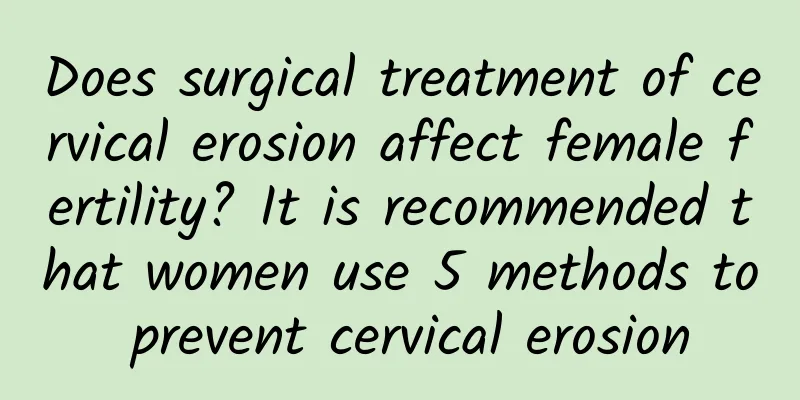When is the right time to have a painless abortion?

|
Painless abortion is more suitable when the pregnancy is seven to eight weeks, because during this period, the embryo is relatively small, the operation is relatively simple, and the risk is relatively low. 1. Best time selection: Painless abortion is usually suitable for women within 10 weeks of pregnancy, and seven to eight weeks is the golden time for surgery. At this time, the embryo has not yet fully developed, the uterine wall is relatively thick, the operation is more convenient, the amount of bleeding is less, and the recovery is faster. Surgery too early or too late will increase the difficulty of operation and the burden on the body. 2. Brief description of the operation principle: Painless abortion is to suck out the embryo in the uterine cavity by vacuum suction combined with anesthetic drugs. Compared with traditional abortion, painless abortion can effectively reduce the pain caused by the operation and relieve the psychological burden of women because of the assistance of anesthesia. But even so, the operation is still an invasive operation and should be treated with caution. 3. Risks and precautions: The longer the pregnancy, the greater the risk of surgery and the possibility of bleeding. This is because the embryo gradually grows, the uterine wall becomes thinner, and the difficulty of surgery increases. Complications such as infection, uterine perforation, and intrauterine adhesions may occur after surgery, so it is particularly important to choose the right time and a regular hospital for surgery. 4. Importance of hospital selection: It is crucial to choose a regular hospital for painless abortion surgery. Regular hospitals are equipped with complete medical equipment and professional medical teams, which can effectively reduce the risk of surgery and the incidence of postoperative complications. However, informal hospitals or small clinics are prone to serious consequences such as postoperative infection and bleeding due to their simple equipment and immature technology. 5. Postoperative care suggestions: After the operation, you should pay attention to rest, avoid overwork, maintain good eating habits, and enhance your body's immunity. Regular follow-up examinations are required after the operation to ensure that the uterus returns to normal. Psychological adjustment is also very important. If necessary, you can seek help from professional psychological counseling. 6. Preventive measures and health education: Although painless abortion is a common remedy for contraceptive failure, it is not a long-term contraceptive method. Female friends should understand and master scientific contraceptive methods to reduce the occurrence of unwanted pregnancies. The popularization of health education and the dissemination of contraceptive knowledge are of great significance to protecting women's physical and mental health. Choosing the right time and professional medical institutions for painless abortion, combined with reasonable postoperative care and health education, can effectively reduce the risks of surgery and help women recover better. I hope this article can provide some useful information and suggestions for friends in need. |
<<: At what age do women reach menopause?
>>: Will I have menstruation if I have an ectopic pregnancy?
Recommend
Is it easy to have beautiful legs? 10-minute leg slimming exercise
If you ask people which part of the body is the h...
Can uterine fibroids heal on their own?
Uterine fibroids cannot heal on their own. Howeve...
Experts introduce the dangers of adnexitis that need to be paid attention to
After childbirth or miscarriage, women's immu...
What are the hazards of ovarian cysts and what are the types
What are the dangers of ovarian cysts? What are t...
What to add to Angelica to treat uterine fibroids?
What to add to Angelica sinensis to treat uterine...
Dietary taboos for patients with bacterial vaginosis
If the vagina is not cleaned regularly, it is eas...
How to treat multiple uterine fibroids? Commonly used treatment methods for multiple uterine fibroids
Multiple uterine fibroids are a type of uterine f...
What to do with menstrual pain? Usually it is blood stasis
Menstrual pain is usually caused by blood stasis....
The agricultural subsidy budget for this year has reached 84.4 billion yuan
In response to former President Lee Teng-hui'...
At what age do uterine fibroids usually occur? At what age do uterine fibroids usually occur?
At what age do uterine fibroids commonly occur? T...
How to successfully treat miscarriage?
How to successfully treat threatened abortion? If...
Is it easier to gain weight by eating homemade meals at home? It might be more effective to eat without TV!
Do you tend to chew every bite of food carefully ...
Postoperative medication for cervical precancerous lesions
Cervical precancerous lesions are a relatively co...
What foods should patients with uterine effusion not eat?
Uterine effusion is one of the common gynecologic...
What are the symptoms of intrauterine adhesions? Pay attention to timely treatment
If there is long-term gynecological inflammation ...









